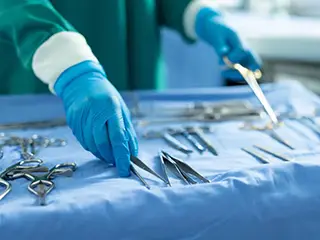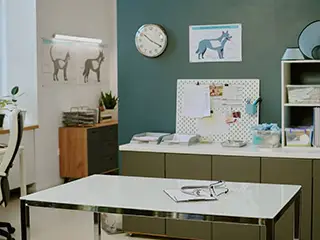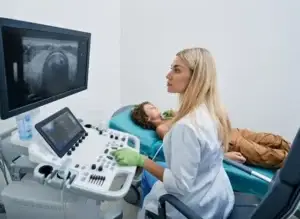
When most of us first hear the term “pharmacy tech” (PT) we immediately think of the helpful people we encounter at our local CVS or Walgreens when we drop off or pick up our prescriptions. We might also think of the PT who helps us in the hospital pharmacy following a visit to the emergency room or after surgery. What isn’t immediately obvious is there are far more options and paths for today’s PTs to choose from than what immediately comes to mind. Let’s explore…
Pharmacies tend to fall into two categories: “open-door” and “closed-door.” Retail pharmacies like CVS and Walgreens are open-door. Basically, anytime you walk in or drive up to the pharmacy and interact with the PT, it is considered open-door. What is easy to overlook and not know is there are a number of closed-door pharmacies operating around us at all times. They are preparing and providing our world with a variety of medications, sometimes even ones that save our furry, four-legged friends! All of these pharmacies offer career opportunities that future PTs may not even know exist for them.
So many opportunities exist in pharmacy technology it is safe to say that whether you are an early bird, night owl, introvert, extrovert, animal lover, or people-pleaser—likely your own unique mix—there is probably a career path for you.
Let’s get back to our furry, four-legged friends. Veterinary pharmacies tend to be closed-door and offer a unique opportunity for PTs. Domestic animals suffer from a wide range of health issues that require customized prescriptions according to species, breed, weight, etc. These prescriptions are often much easier to administer to patients with sharp teeth and/or picky palates when they have tasty flavors added to them or they are applied transdermally (via the skin). PTs assist in serving this unique patient population by compounding these medications.
Of course, most compounding pharmacies are dedicated to serving us not-quite-as-furry or cute bipeds. That’s where PTs assist with the preparation (incl. sterile and non-sterile, depending on credentials), labeling, and dispensing of human medications. This is somewhat similar to PTs in retail pharmacies, where they may call doctors, obtain insurance authorization, and assist with ordering pharmaceuticals in low supply. Compounding pharmacies can be open-door or closed-door, meaning that they are in-person or mail-order, so there is variability in location and customer interaction. Individual PTs will need to assess which type of pharmacy is the right fit for them.
Mail-order pharmacies have become very common in recent years, as insurance companies and consumers have sought to lower costs and order prescriptions in larger quantities—all while sparing a trip to their local pharmacy. This has created more closed-door options for PTs where most of their patient interactions are via the telephone.
For those who want a unique on-site type of experience, some options include working in prisons and jails, as well as long-term care and hospice facilities. In all of these instances, PTs work where patients live and they may interact with them, depending on the way the facility is set-up and administered. PTs certainly would be part of a larger care system, interacting with staff like nurses, and perhaps administrators who operate the facility.
PTs who crave a bit more excitement and variability on the job, as well as hospital-level patient contact, may enjoy assisting surgeons collecting patient medication history. Another option is working in the ER where the stakes are especially high to collect and communicate accurate information between the ER and pharmacist as quickly as possible while patients are in acute distress. Hospitals also often have multiple opportunities for PTs in ambulatory care and other departments.
Another unique and interesting area that many may not initially consider is nuclear medicine. Nuclear PTs (NPTs) prepare radiopharmaceuticals, which are typically used for chemotherapy and specialized imaging. While it might take some additional training to enter this area of pharmaceutical technology, this is a niche career in pharmaceutical technology worth exploring if it piques your interest.
The possibilities don’t end there. If you choose pharmacy technology and learn all you can and then eventually feel like you want to do something different and more challenging in medicine, then guess what? Nothing is lost and everything is gained. You have set yourself up for a great future in medicine. Carrington’s Pharmacy Technology Program Director Elie Haddad describes the PT Certificate program at Carrington as the cornerstone for all other medical studies.
Haddad also offers that there are positions in the US Army with full benefits and medical soldier ranking for PTs.
The retail pharmacies initially mentioned clearly represent just one of the many environments where PTs work. This means that students who enter this field from a diverse range of backgrounds with their own unique personalities and preferences have a wide variety of open-door and closed-door pharmacy environments to choose from for their career paths. What PTs do need to have in common is a dedication to patient care, professionalism, and a commitment to finding their own niche(s) in the many exciting paths pharmaceutical technology offers today.



